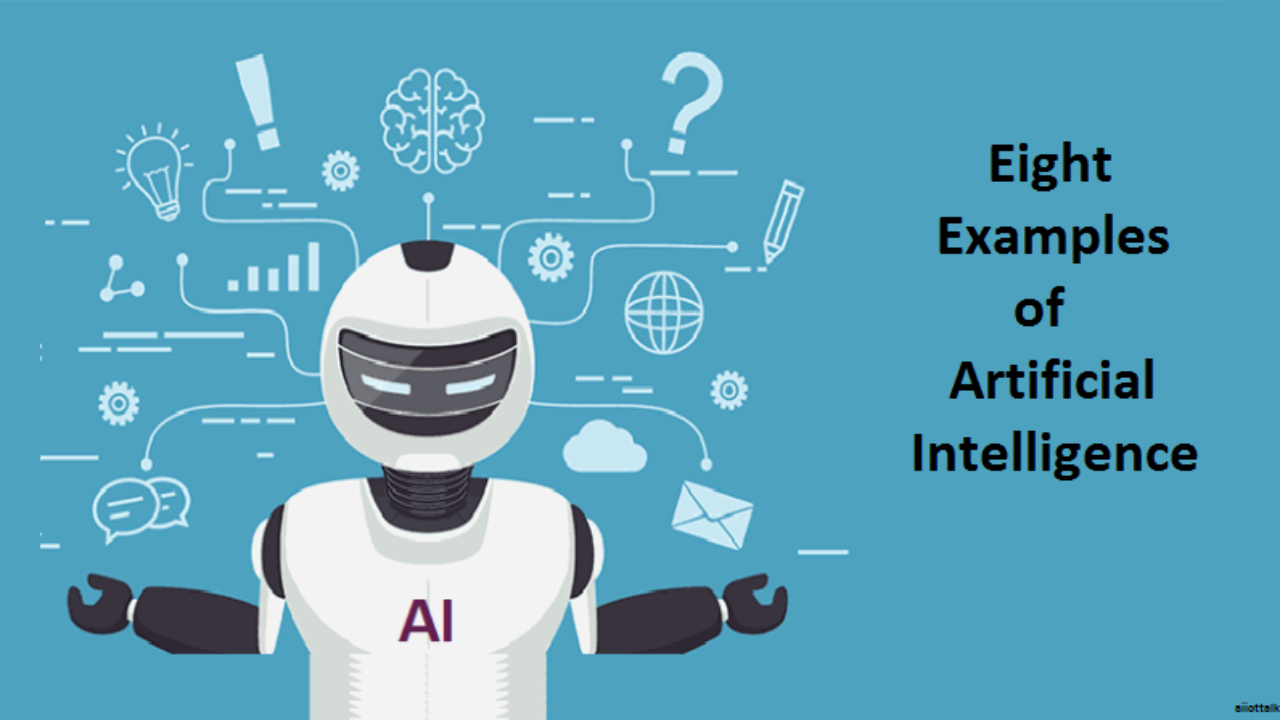ARTIFICIAL INTELLIGENCE, APPLICATIONS, EXAMPLES REGULATION AND THE FUTURE
ARTIFICIAL INTELLIGENCE APPLICATIONS AND EXAMPLES
Artificial Intelligence Applications
Artificial intelligence has applications across multiple industries, ultimately helping to streamline processes and boost business efficiency.
Healthcare
AI is used in healthcare to improve the accuracy of medical diagnoses, facilitate drug research and development, manage sensitive healthcare data and automate online patient experiences. It is also a driving factor behind medical robots, which work to provide assisted therapy or guide surgeons during surgical procedures.
Retail
AI in retail amplifies the customer experience by powering user personalization, product recommendations, shopping assistants and facial recognition for payments. For retailers and suppliers, AI helps automate retail marketing, identify counterfeit products on marketplaces, manage product inventories and pull online data to identify product trends.
Manufacturing
AI in manufacturing can reduce assembly errors and production times while increasing worker safety. Factory floors may be monitored by AI systems to help identify incidents, track quality control and predict potential equipment failure. AI also drives factory and warehouse robots, which can automate manufacturing workflows and handle dangerous tasks.
Finance
The finance industry utilizes AI to detect fraud in banking activities, assess financial credit standings, predict financial risk for businesses plus manage stock and bond trading based on market patterns. AI is also implemented across fintech and banking apps, working to personalize banking and provide 24/7 customer service support.
Gaming
Video game developers apply AI to make gaming experiences more immersive. Non-playable characters (NPCs) in video games use AI to respond accordingly to player interactions and the surrounding environment, creating game scenarios that can be more realistic, enjoyable and unique to each player.
Military
AI assists militaries on and off the battlefield, whether it's to help process military intelligence data faster, detect cyberwarfare attacks or automate military weaponry, defense systems and vehicles. Drones and robots in particular may be imbued with AI, making them applicable for autonomous combat or search and rescue operations.
Artificial Intelligence Examples
Specific examples of AI include:
Generative AI Tools
Generative AI tools, sometimes referred to as chatbots — including ChatGPT, Gemini, Claude and Grok — use artificial intelligence to produce written content in a range of formats, from essays to code and answers to simple questions.
Smart Assistants
Personal AI assistants, like Alexa and Siri, use natural language processing to receive instructions from users to perform a variety of ‘smart tasks.’ They can carry out commands like setting reminders, searching for online information or turning off your kitchen lights.
Self-Driving Cars
Self-driving cars are a recognizable example of deep learning, since they use deep neural networks to detect objects around them, determine their distance from other cars, identify traffic signals and much more.
Wearables
Many wearable sensors and devices used in the healthcare industry apply deep learning to assess the health condition of patients, including their blood sugar levels, blood pressure and heart rate. They can also derive patterns from a patient’s prior medical data and use that to anticipate any future health conditions.
Visual Filters
Filters used on social media platforms like TikTok and Snapchat rely on algorithms to distinguish between an image’s subject and the background, track facial movements and adjust the image on the screen based on what the user is doing.
The Rise of Generative AI

Generative AI describes artificial intelligence algorithms that can create new content — such as text, images, video or audio — based on a given user prompt. To work, a generative AI model is fed massive data sets and trained to identify patterns within them, then subsequently generates outputs that resemble this training data. Generative AI uses machine learning, neural networks, and deep learning-based large language models to produce its content.
Generative AI has gained massive popularity in the past few years, especially with chatbots like ChatGPT, Gemini and Claude — as well as image generators such as DALL-E 2 and Midjourney — arriving on the scene. These kinds of tools are often used to create written copy, code, digital art, object designs and more. They are leveraged in industries like entertainment, marketing, consumer goods and manufacturing.
AI REGULATION AND THE FUTURE OF AI
AI Regulation
As artificial intelligence algorithms grow more complex and powerful, AI technologies — and the companies that create them — have increasingly drawn scrutiny from regulators across the world.
In 2021, the European Union Parliament proposed a regulatory framework that aims to ensure AI systems deployed within the European Union are “safe, transparent, traceable, non-discriminatory and environmentally friendly.” Under this framework, AI systems that can be used to perform real-time surveillance, or to manipulate people, categorize populations or discriminate against vulnerable groups, would be banned from use within the EU (though some limited exceptions may be made for law enforcement purposes).
In 2022, the Biden White House introduced an AI Bill of Rights, outlining principles for responsible use of AI. And in 2023, the Biden-Harris administration introduced The Executive Order on Safe, Secure and Trustworthy AI, which aims to regulate the AI industry while maintaining the United States’ status as a leader in artificial intelligence innovation.
The order requires the companies operating large AI systems to perform safety testing and report results to the federal government before making their products publicly available. It also calls for labelling of AI-generated content and increased efforts to answer questions about the impact of AI on intellectual property rights. Additionally, the executive order calls for several worker protections including against unsafe AI implementation and harmful disruptions of the labour force. The order also calls for the United States government to work alongside other countries to establish global standards for mitigating the risks of AI and promoting AI safety more generally.
Future of Artificial Intelligence

In the near future, AI is poised to advance in machine learning capabilities and related frameworks like generative adversarial networks (GANs), which can help further develop generative AI and autonomous systems. Inevitably, AI will continue to make an impact across multiple industries, potentially causing job displacement, but also new job opportunities.
Looking ahead, one of the next big steps for artificial intelligence is to progress beyond weak or narrow AI and achieve artificial general intelligence (AGI). With AGI, machines will be able to think, learn and act the same way as humans do, blurring the line between organic and machine intelligence. This could pave the way for increased automation and problem-solving capabilities in medicine, transportation and more — as well as sentient AI down the line.
While likely ground-breaking, future advancements in AI have raised concerns such as heightened job loss, widespread disinformation, unpredictable AI behaviour and possible moral dilemmas associated with reaching technological singularity.
For now, society is largely looking toward federal and business-level AI regulations to help guide the technology’s future.


























